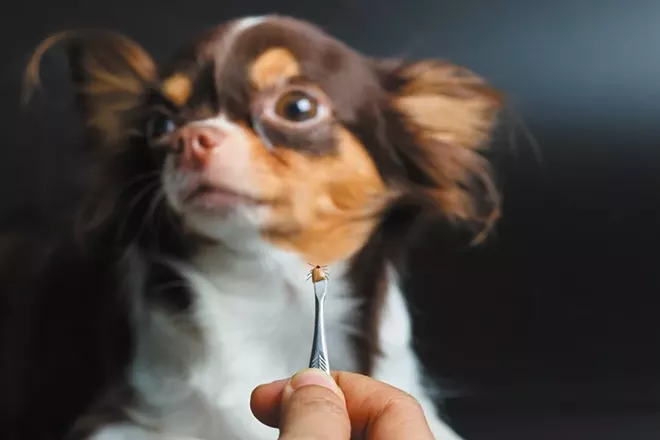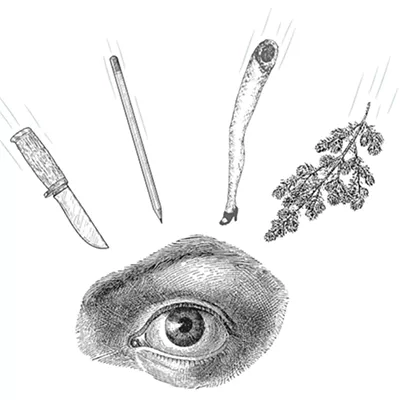As the spring warms the Inland Northwest, out come the ticks. Mortified pet owners call veterinary clinics often wanting to know the best way to remove ticks.
First off, eliminate all of the strange and bizarre methods of tick removal you've heard of previously. You know, things like lit matches, covering ticks with petroleum jelly, dousing them with volatile chemicals or painting them with fingernail polish.
These methods don't work well or consistently enough. In some cases, they may injure your pet or increase the likelihood that the tick injects disease agents or toxins into the animal.
Second, to be most correct, assemble the following items: disposal latex or nitrile gloves for you, good tweezers with a fine point, rubbing alcohol or antiseptic wipes, a small jar with a lid, and lickable treats to distract the animal. Now in theory, you don't truly "need" all these things, but this is the best way to do it.
Tick removal is not painful. Find a second person to help you distract the animal with the treats while you remove the tick or ticks. The latter refers to when you get home after a day afield and find ticks all over the pet. With the advent of preventatives and agents that kill fleas and ticks, it is less common now to find a lot of ticks attached.
Before you start plowing through the pet's fur, feathers or scales to find the tick you located previously, wash your hands well. Ticks transmit diseases to both humans and animals. In fact, worldwide, ticks transmit more disease than mosquitoes do.
Next, don your gloves. Have your partner in crime steady the animal with the lickable treats. For example, my dog loves to chew part of an elk antler.
With the fine tweezers, grasp the tick as close to the skin surface as possible. Pinch it lightly and begin to pull gently and hold tension. In a few seconds, it will detach from the pet.
Squeeze too hard and you may push things from inside the tick into the pet. Pull too hard and you may pull the tick apart. Then you may have a harder time locating the head and getting it out.
After it releases, take a close look at it to make sure you got it all: body, head and mouth parts. You should see all eight of its wiggly legs. Drop it in your container with a little of the rubbing alcohol, and you will render the tick metaphysically challenged (that is, dead).
Disinfect the bite area with rubbing alcohol or the antiseptic wipes. Doff your gloves and wash your hands again.
Save the tick in the container. If your pet (or a person) shows signs of illness within a few days after the tick is removed, your veterinarian or physician may want to see what species of tick your pet picked up.
Lastly, stay vigilant for more ticks. It is very common for additional ticks to be found on a pet in subsequent days as they engorge.
Charlie Powell is the public information officer for the Washington State University College of Veterinary Medicine.
















